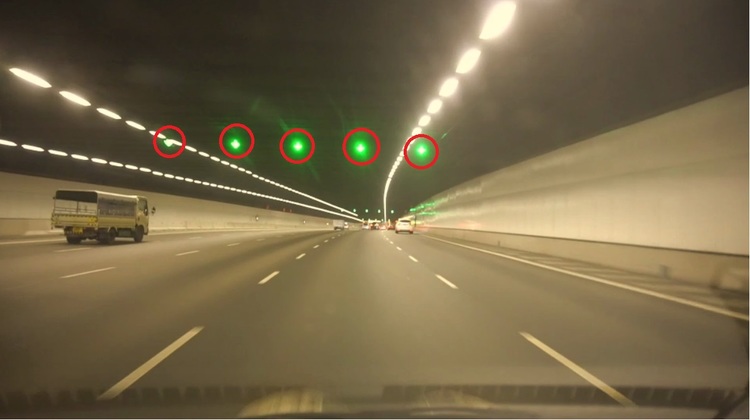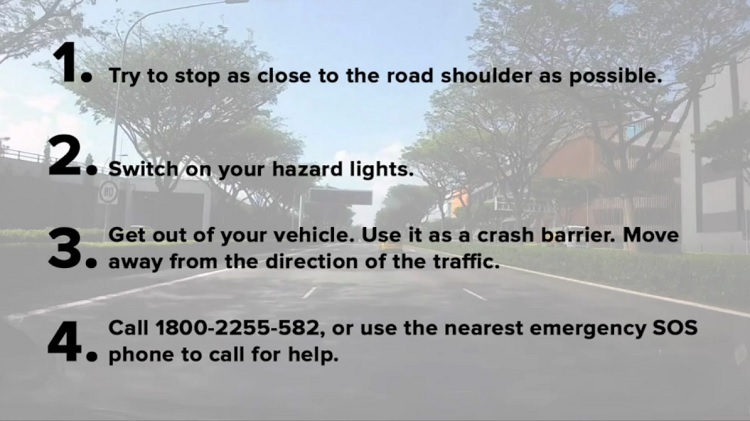Everything You Need to Know About Tunnel Safety in Singapore
Do you know what to do if your car breaks down in a tunnel, or if you meet with an accident while travelling in one? Read on to find out more about tunnel safety in Singapore.
Unlike regular motorways, tunnels are confined spaces with numerous bends and blind spots. These “obstacles” put drivers at a disadvantage as they often have their vision blocked off. Drivers also have lesser room for error when navigating through a tunnel.
Before we cover the safety procedures, let’s recap the basics of tunnel driving in Singapore
Tunnels in Singapore and their Speed Limit
There are six different road tunnels in Singapore. The most commonly travelled ones are the Central Expressway (CTE), the Kallang-Paya Lebar Expressway (KPE) and the Marina Coastal Expressway (MCE). These tunnels have a speed limit of 80km/h. Do take note that certain bends on the KPE have a speed limit of 70km/h.
For the Fort Canning (FCT) and Woodsville Tunnel (WVT), they have a speed limit of 50km/h. Lastly, there’s the Sentosa Gateway Tunnel, which has a speed limit of 40km/h.
Do’s and Don’ts of Tunnel Driving
When driving in a tunnel, you should always perform the following actions:
- Plan your route in advance (It might be difficult to re-enter a tunnel after exiting)
- Turn on your headlights (This helps alert other drivers of your presence)
- Listen to a local radio station (For LTA-related emergency announcements)
- Follow traffic signs and stay in lane (No explanation needed)
- Insert CashCard into IU in advance (You might pass an ERP gantry after exiting a tunnel)
- Make sure your vehicle has enough petrol (Because finding a nearby petrol station can be a problem)
- Secure all goods safely (Making a U-Turn or stopping to pick up your goods will be close to impossible)
- Keep left if you’re driving heavy vehicle (Similar to driving on regular roads)
On the other hand, here are some actions which you should not do when travelling in tunnels:
- Overtake, tailgate and cutting across lanes (Drivers have lesser room for error when driving in a tunnel)
- Stopping, unless there is an emergency (Other vehicles will be travelling at high speeds and they might not be able to avoid your parked vehicle in time)
- Reversing your vehicle (For obvious reasons)
- Driving on the road shoulder (Dangerous and illegal)
- Changing your tire or refuelling your vehicle (Dangerous due to a lack of space)
Speed Cameras in Tunnels

Speed cameras can be found in the KPE and MCE tunnels. There are signs in the tunnels that tell you when you are approaching one. Based on experience, you can drive 10km/h above the speed limit and not get caught. Don’t take our word for it though.
Lane Use Signs in Tunnels

There are lane use signs located overhead in tunnels. These signs serve as an indication to let drivers know if the lane is available for use.
For example, if an accident were to occur on the first lane, a red cross will be flashed to indicate that the lane is closed. If a flashing amber cross is displayed, it means the lane will be closed ahead. Lastly, the green arrow indicates that the lane is available for use.
If you see red crosses on all the lanes, that probably means there’s a major obstruction or emergency ahead. Do not proceed any further and find the nearest exit.
Now that we’ve covered the basics of tunnel driving, let’s move on to the safety procedures.
Car Accidents in Tunnels
Although rare, car accidents do happen in tunnels. If you find yourself involved in one, here are the steps to take:
- Drive out of the tunnel if there are no injuries to attend to (Do not exit your car to examine the damages. That can be done after you find a safe spot to park)
- Call 995/999 if there are injured parties
- If you need assistance from LTA, you may use the nearest emergency SOS phone to call for help (The SOS phones are located every 100 metres, next to the extreme left lane). Alternatively, you may also use your handphone to call 1800-CALL-LTA (1800-2255-582)
Vehicle Breakdown in Tunnels

For vehicle breakdowns, follow these safety procedures:
- Stop your vehicle by the road shoulder if possible
- Switch on your hazard lights to warn other road users
- Use the nearest emergency SOS phone to call LTA Operations Control Centre. Alternatively, you may also use your handphone to call 1800-CALL-LTA (1800-2255-582) for assistance.
- LTA will send a vehicle recovery team to tow your vehicle to the nearest designated car park.
- While waiting for your vehicle to be towed, you should find and stay on a raised platform on the road shoulder. You should also be waiting downstream of your vehicle
- Under no circumstances should you attempt to repair your vehicle in the tunnel
- For your own safety, you may be required to leave the tunnel via the nearest escape exit
- If you are unable to move your vehicle to the road shoulder, or if its unsafe to leave your car, stay in your vehicle and call for assistance
If a call to 1800-CALL-LTA has been made, make sure to let them know your location in the tunnel and your direction of travel.f you are unsure of your location, look for an emergency exit door label, a slip road exit or sign, or kilometre markings on the walls or raised platform.
These same safety procedures can also be applied to vehicle breakdowns on highways.
Emergency Exits in Tunnels
There are two kinds of emergency exits in tunnels. The first is the Emergency Escape Staircase. Located every 500 metres next to the slow lane (extreme left lane), this exit leads to the street level.
The other is called the Pedestrian Cross Passage Door. Located every 100 metres next to the fast lane (extreme right lane), these exits lead to the opposite bound tunnel. These exits can only be found in the CTE, KPE and MCE tunnels.
For the CTE tunnel, the emergency exits are identified by red-and-white stripes and flashing orange lights. As for the KPE and MCE tunnels, they are identified by green panels and flashing bluish-white lights.
What to Do in the Event of an Emergency
If you are driving inside a tunnel when an emergency occurs, please follow these safety procedures:
- Drive out of the tunnel immediately via the closest exit
- Remain vigilant and pay attention to the overhead lane use signs. Avoid driving in lanes that are marked with a red cross
- Listen to any local radio stations for emergency announcements from LTA
- If there’s an order for immediate evacuation, turn off your engine and leave your vehicle. Quickly travel by foot to the closest emergency exit
- Under no circumstances should you reverse your vehicle in the tunnel
- Please be vigilant and look out for fellow motorists who are also evacuating
- If police officers or road marshals are present, follow their directions when evacuating
We hope you learned something new about tunnel driving and tunnel safety procedures after reading this article. For more driving guides and advice, stay tuned to Motorist.sg.
Claim your free car valuation today!
Read more: 15 Unspoken Etiquette Rules That Every Driver Should Know
Download the new Motorist app now. Designed by drivers for drivers, this all-in-one app lets you receive the latest traffic updates, gives you access to live traffic cameras, and helps you manage LTA and vehicle matters. Download it now and stand a chance to win $1,000 worth of petrol vouchers monthly.


